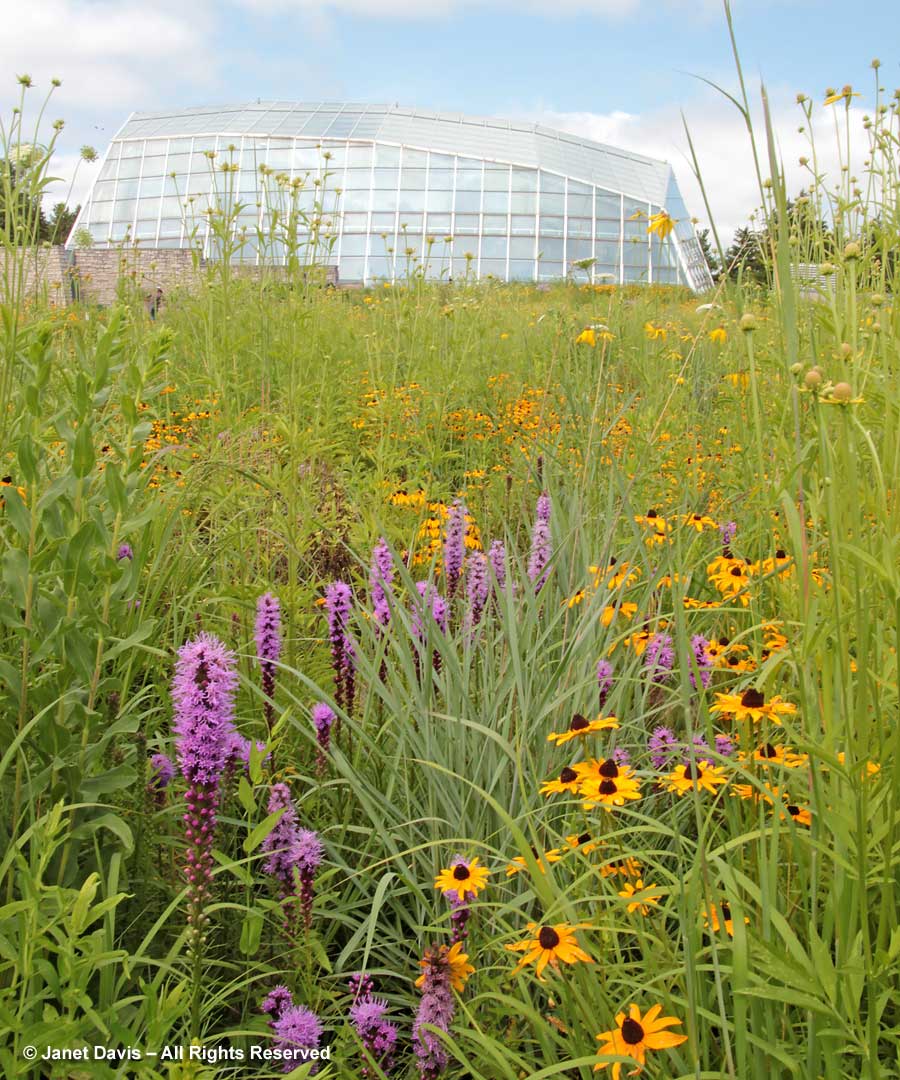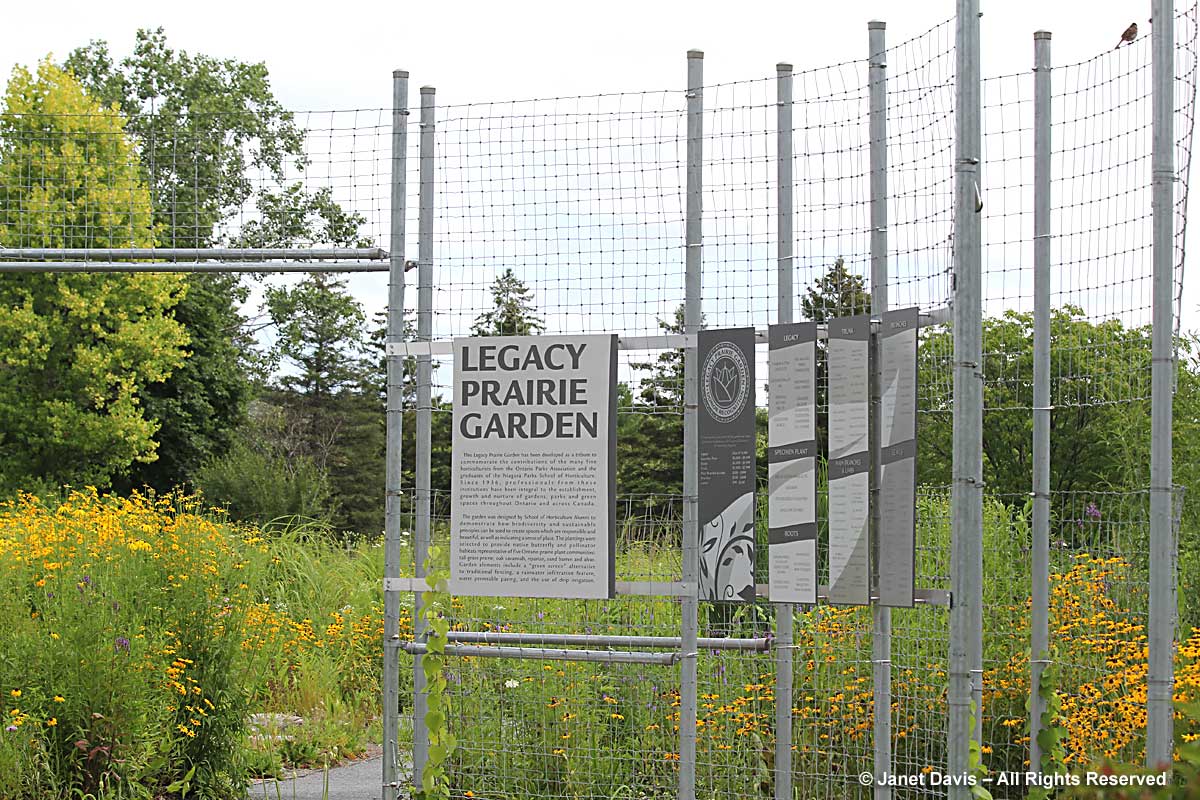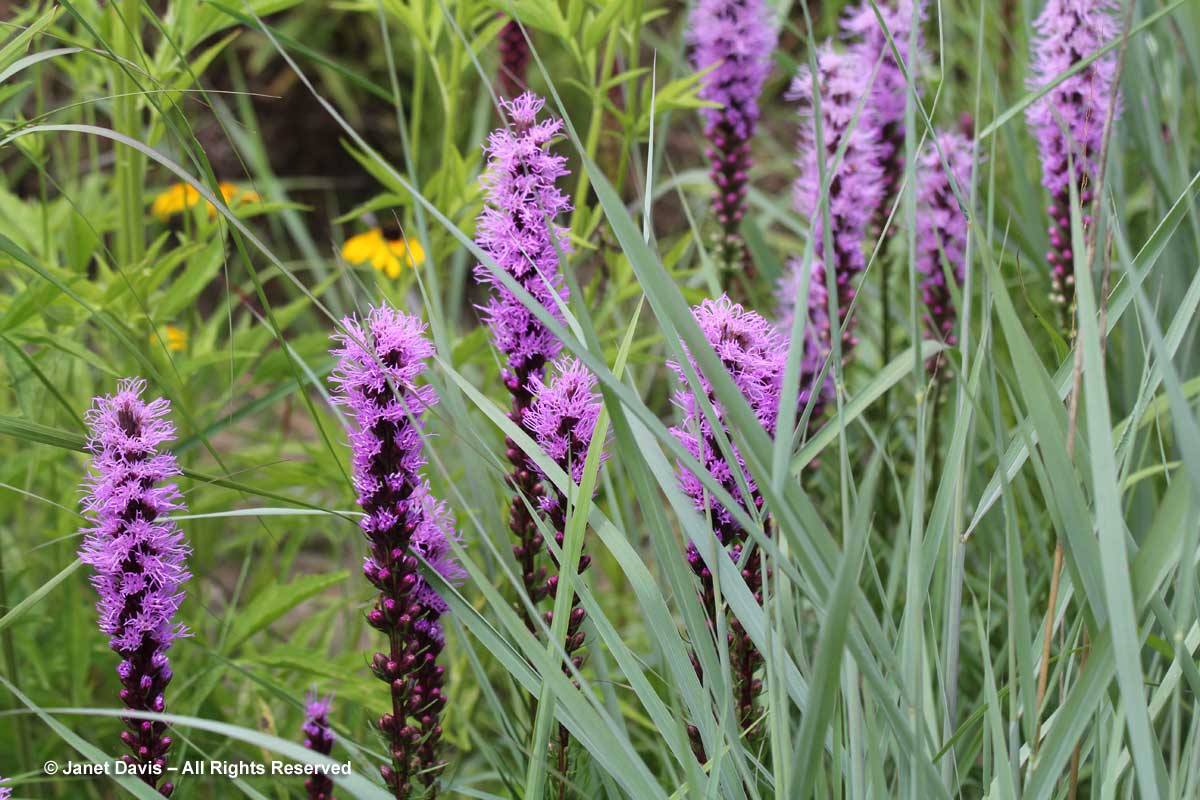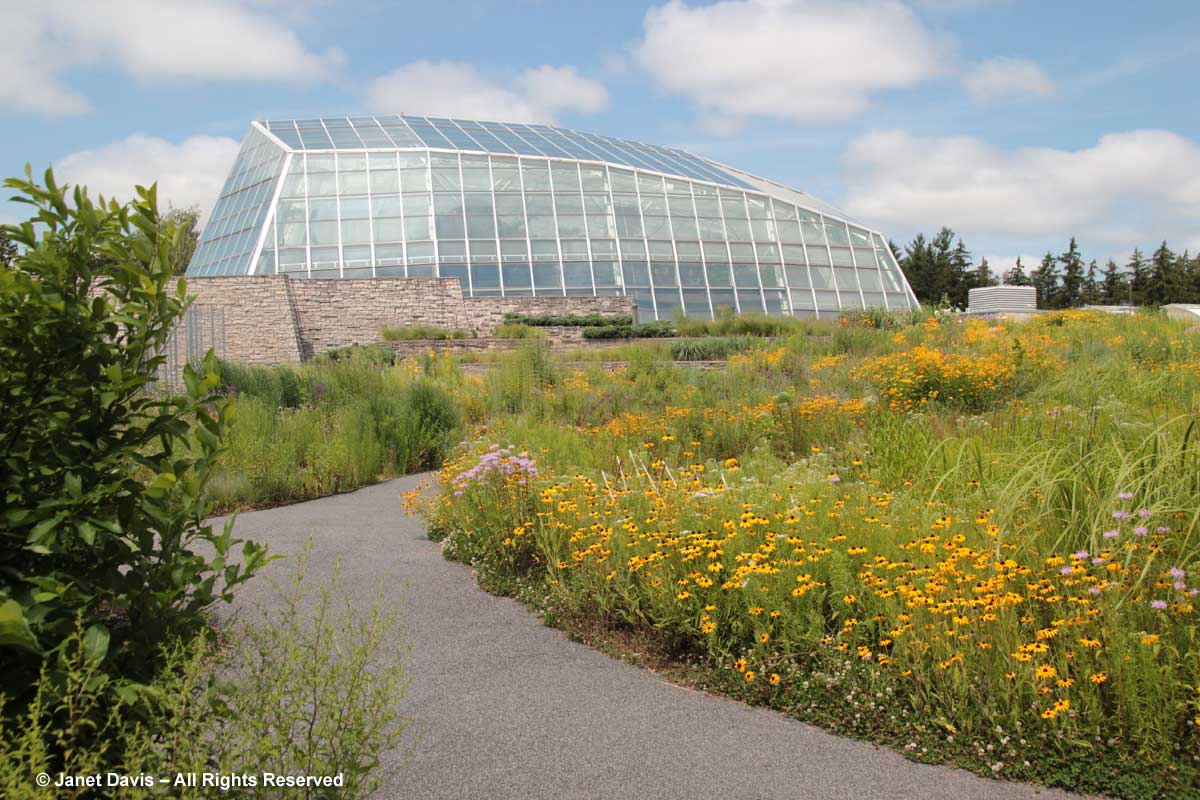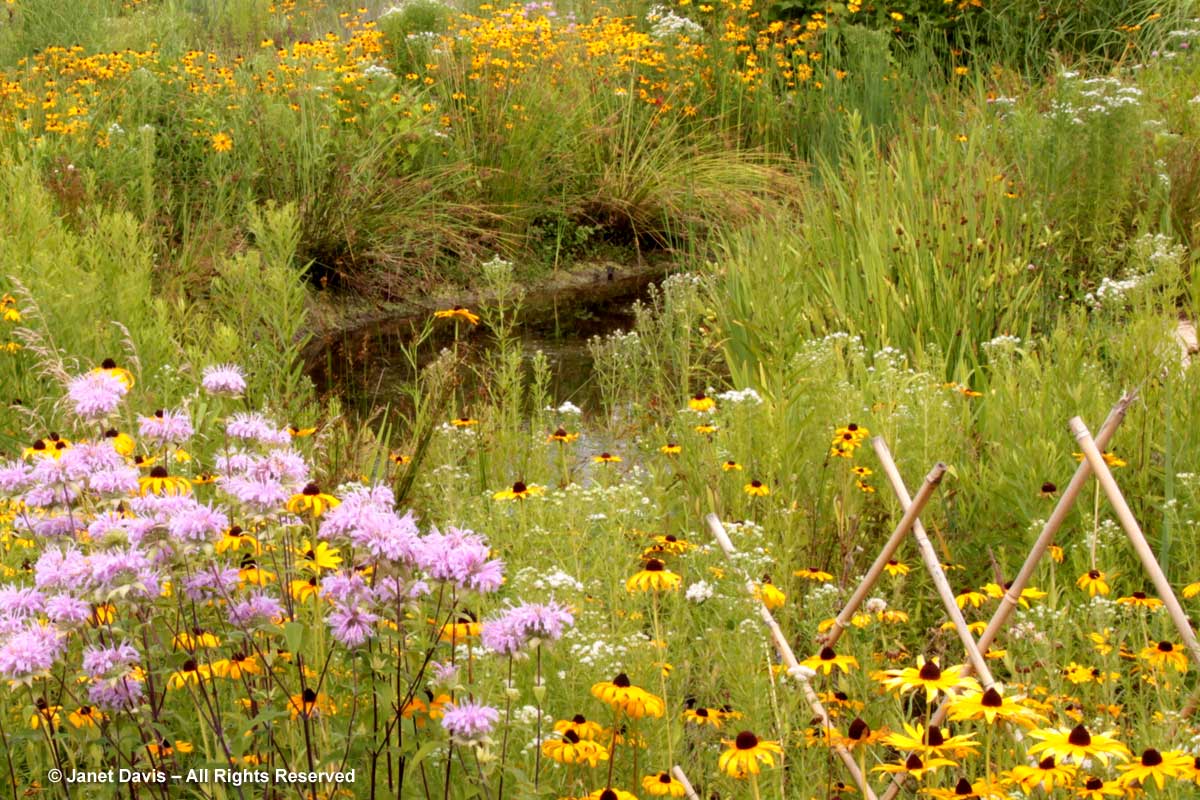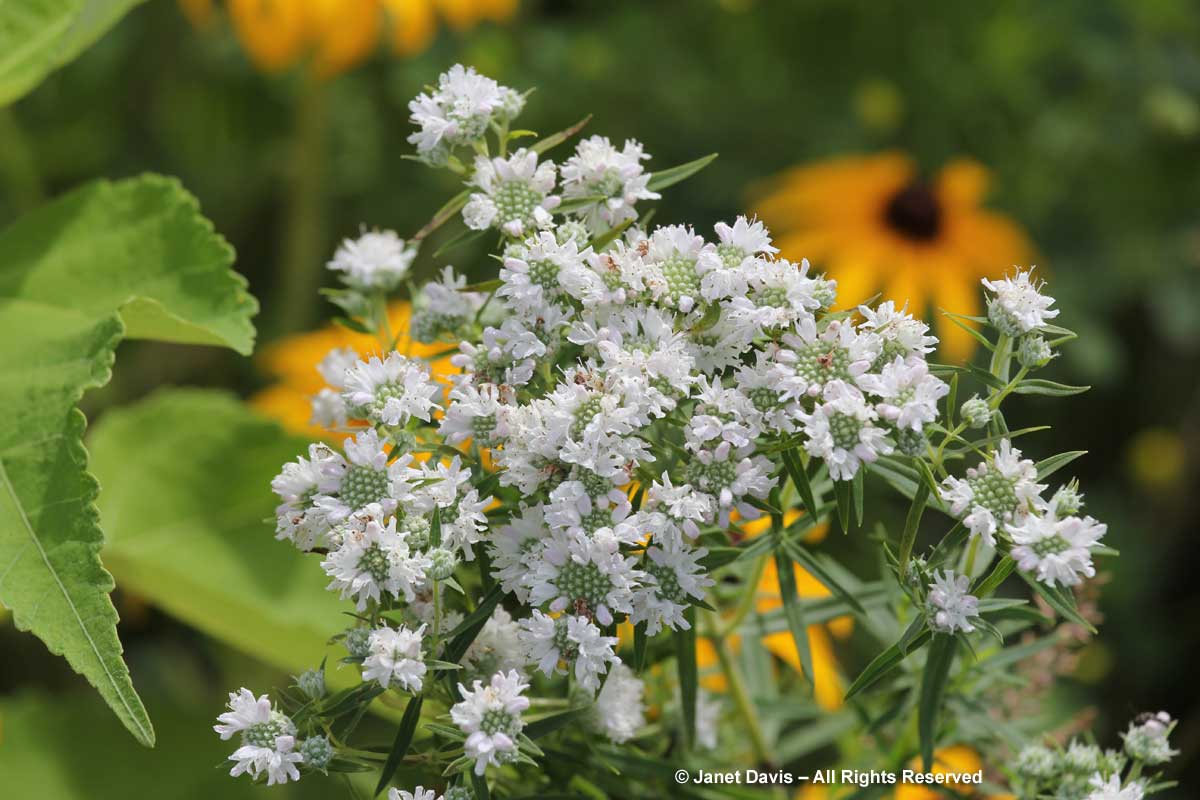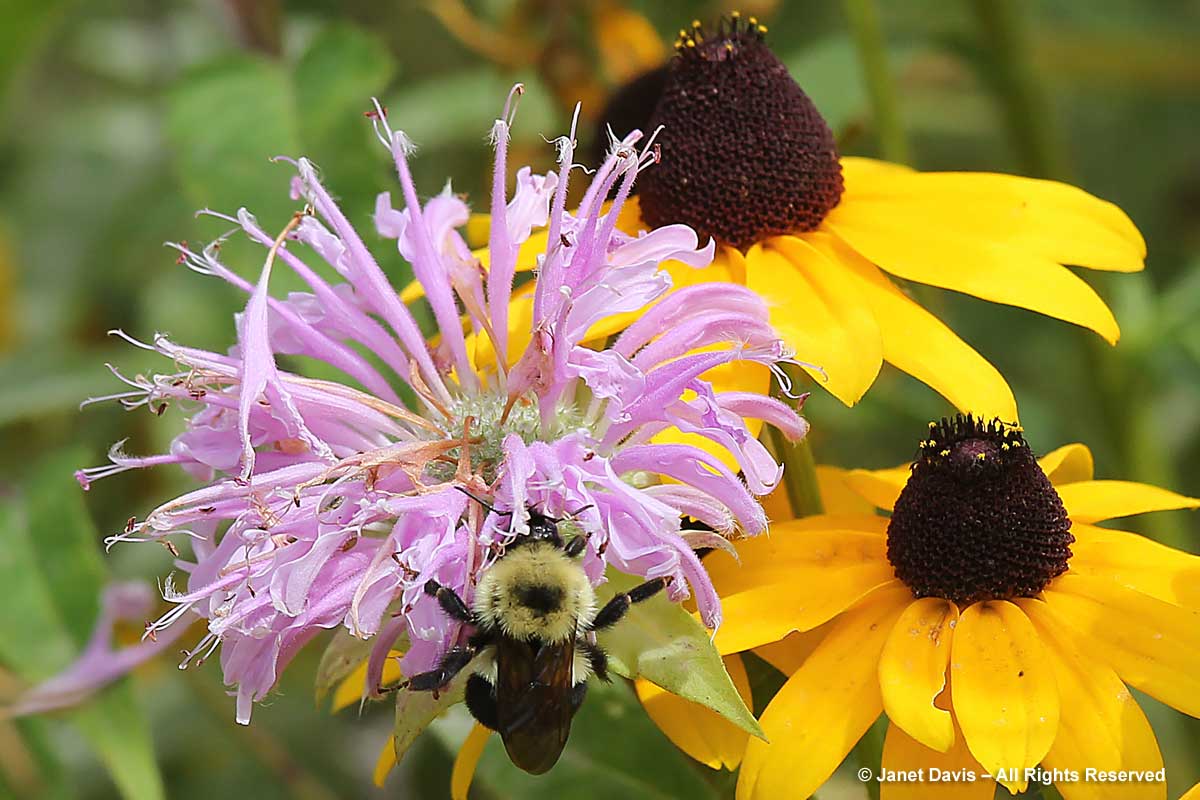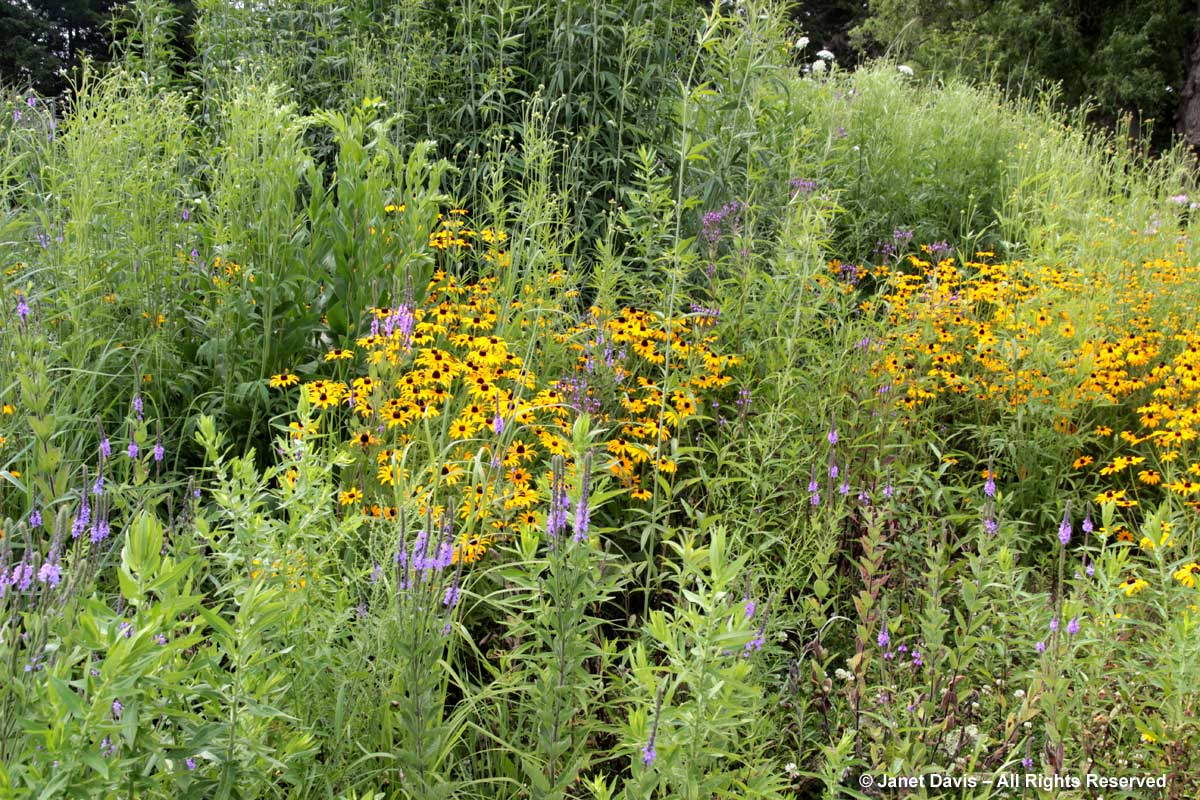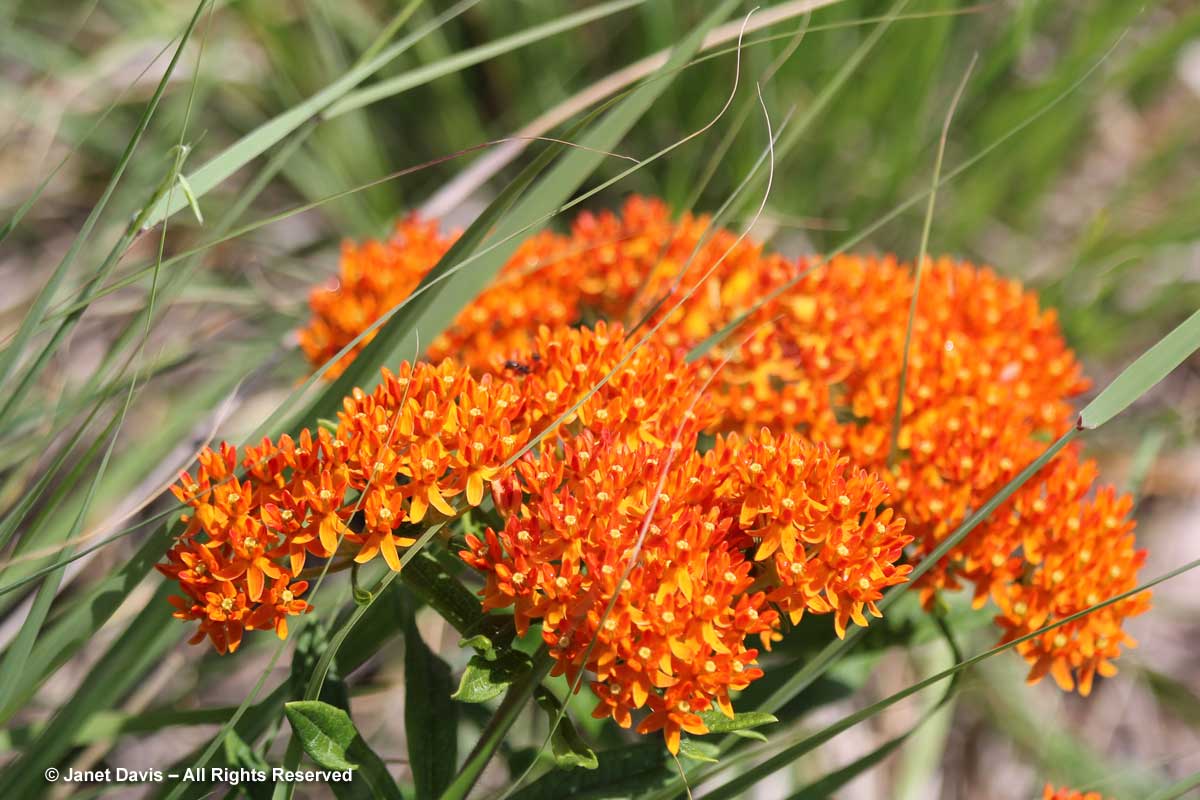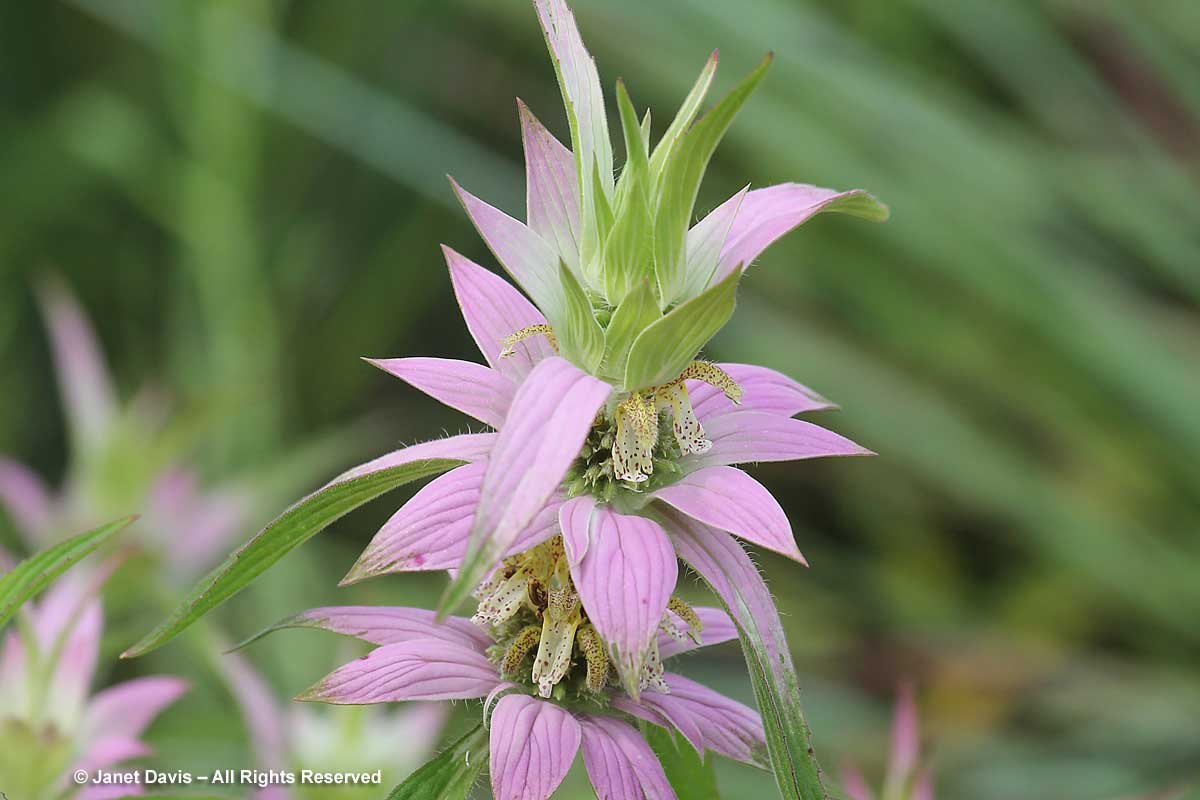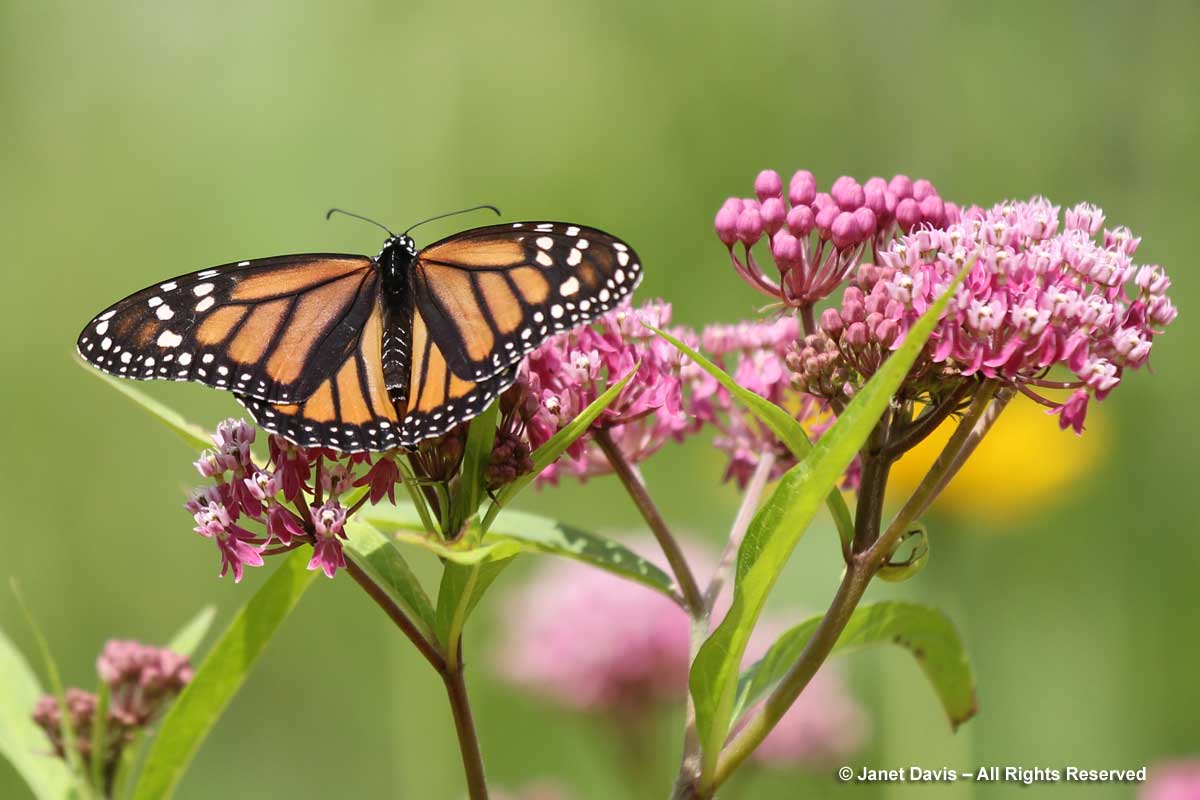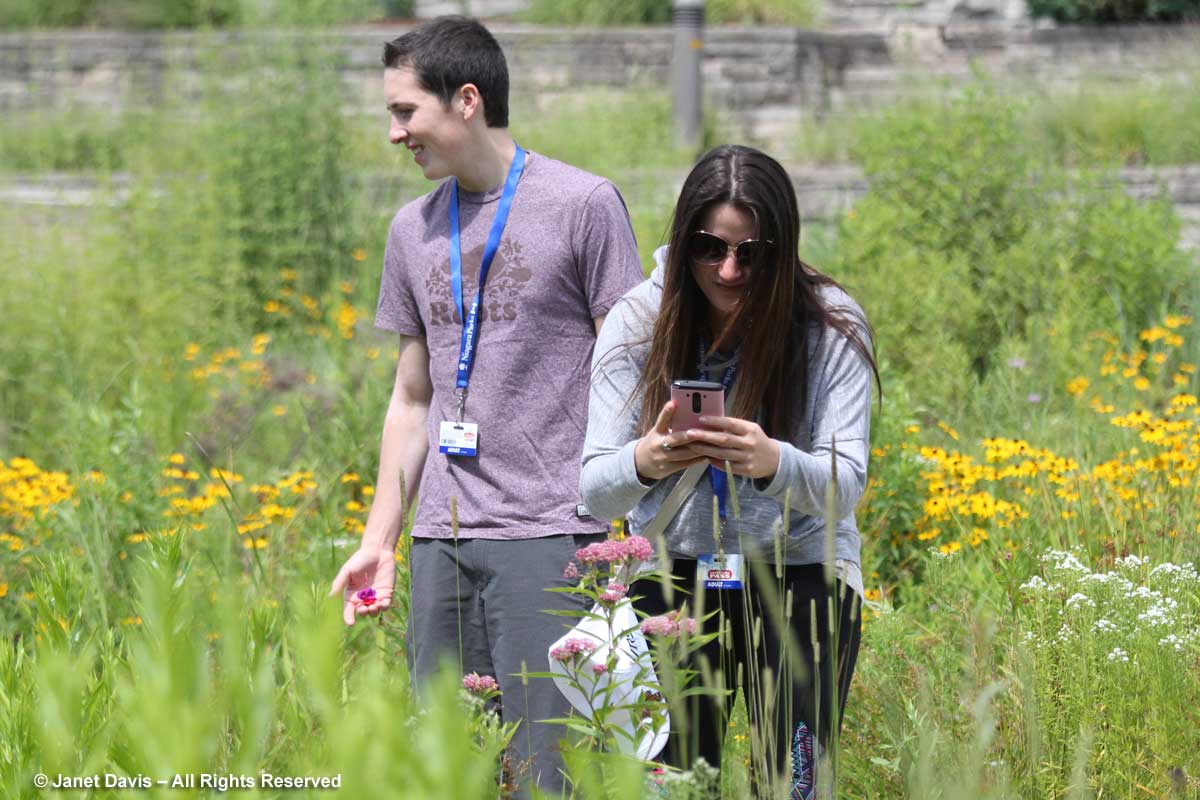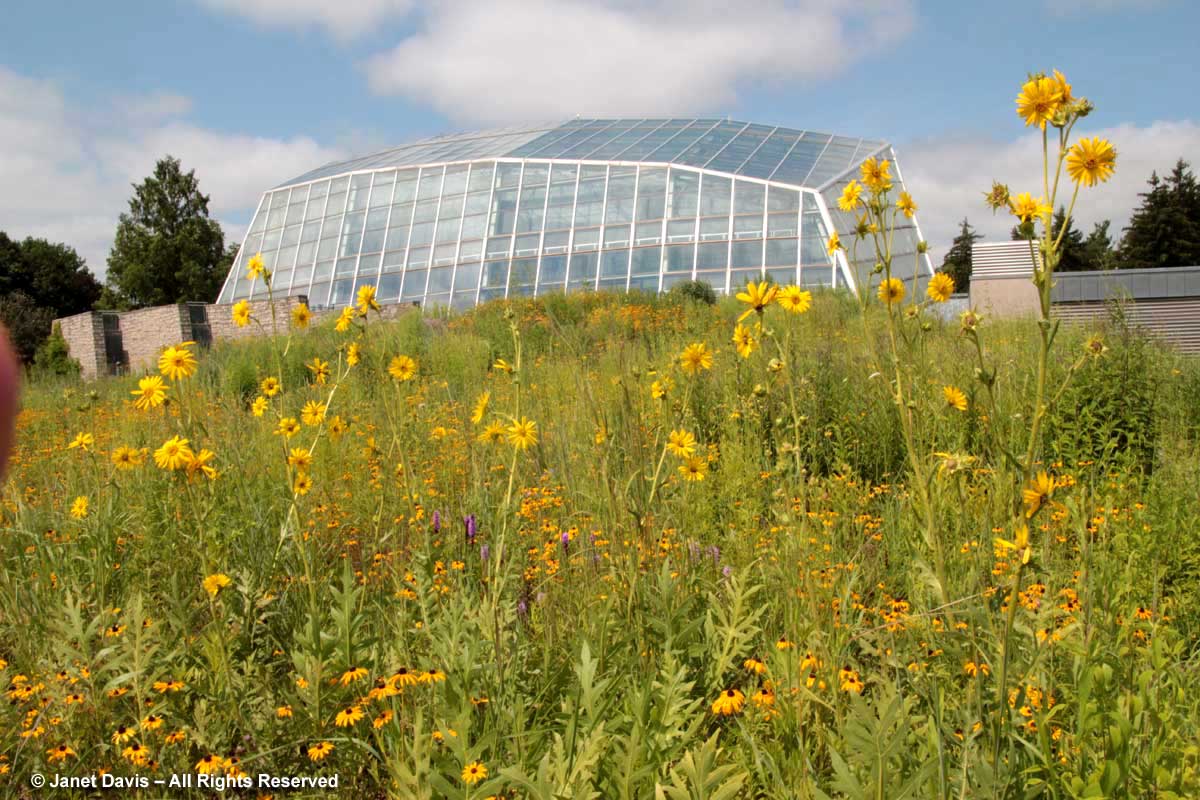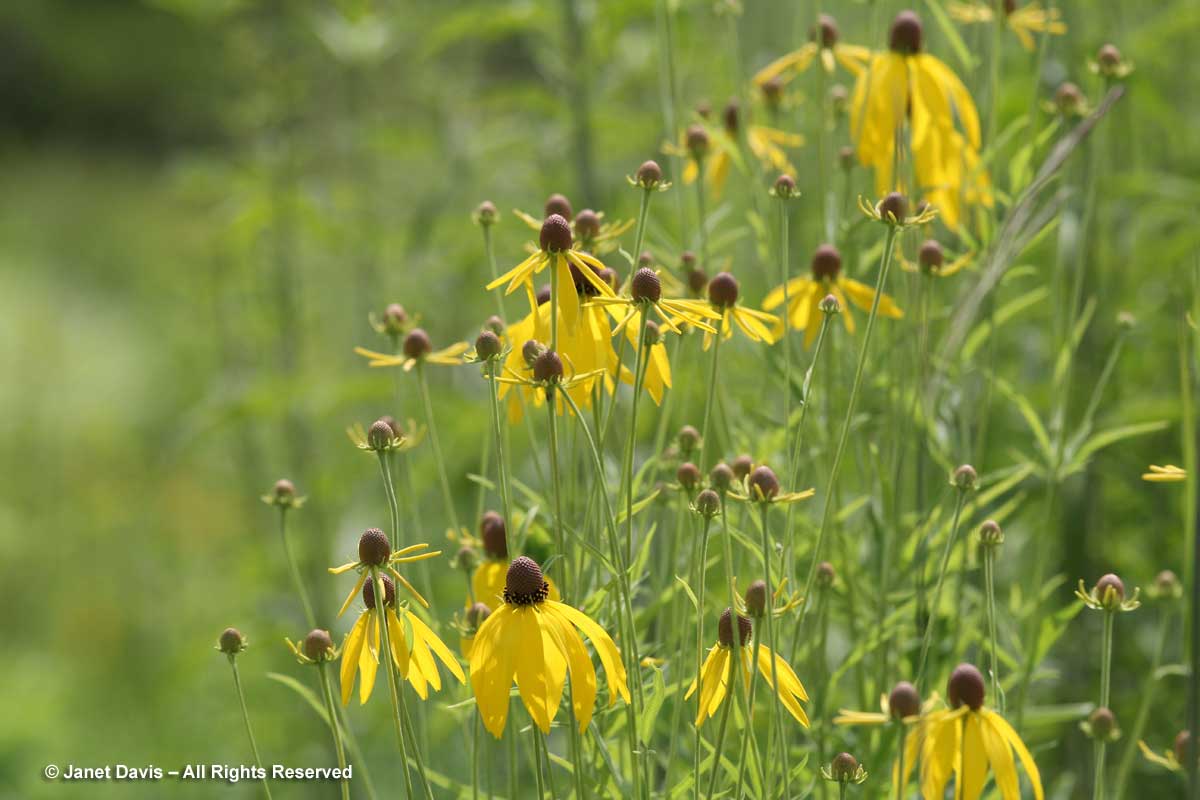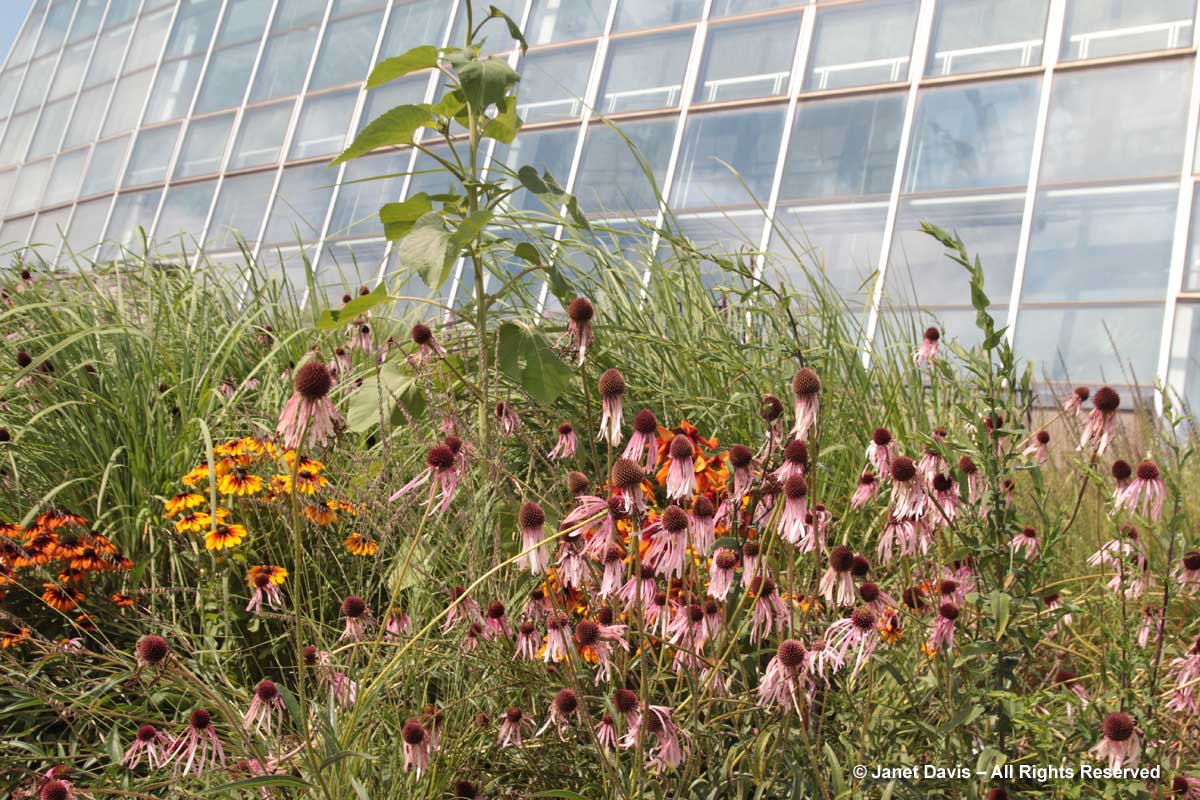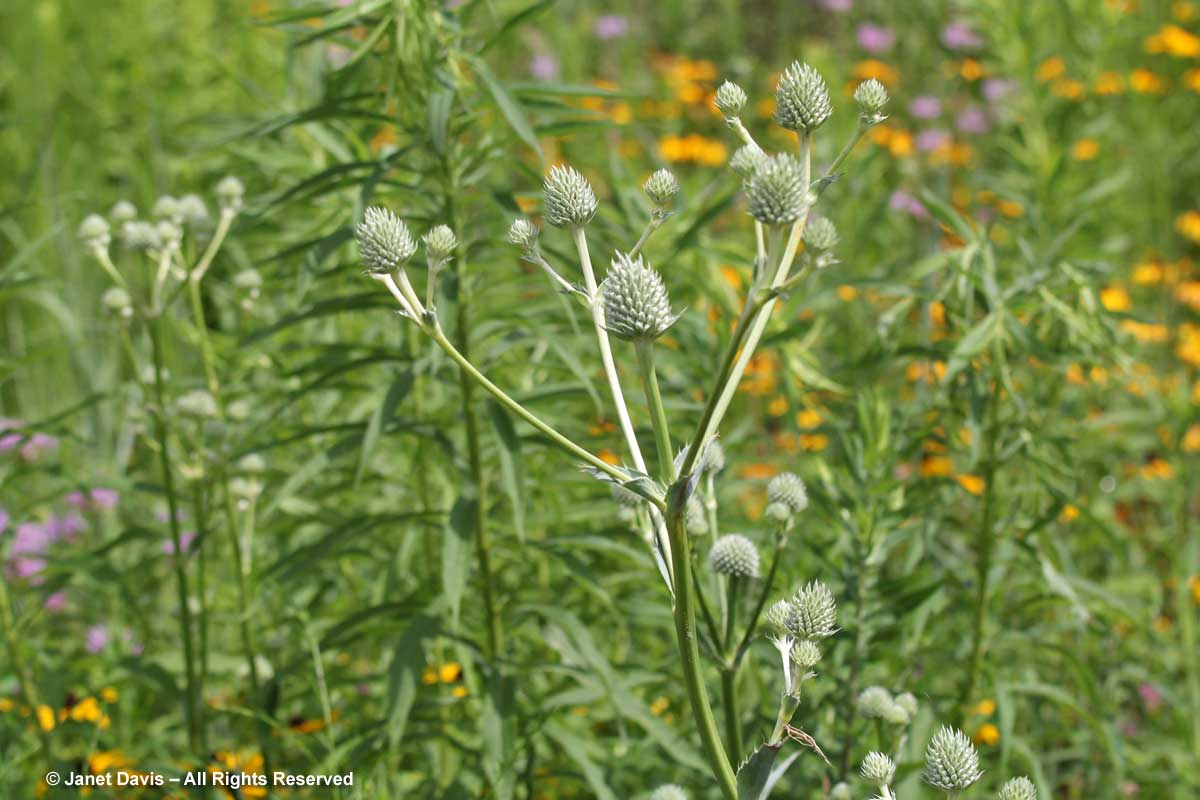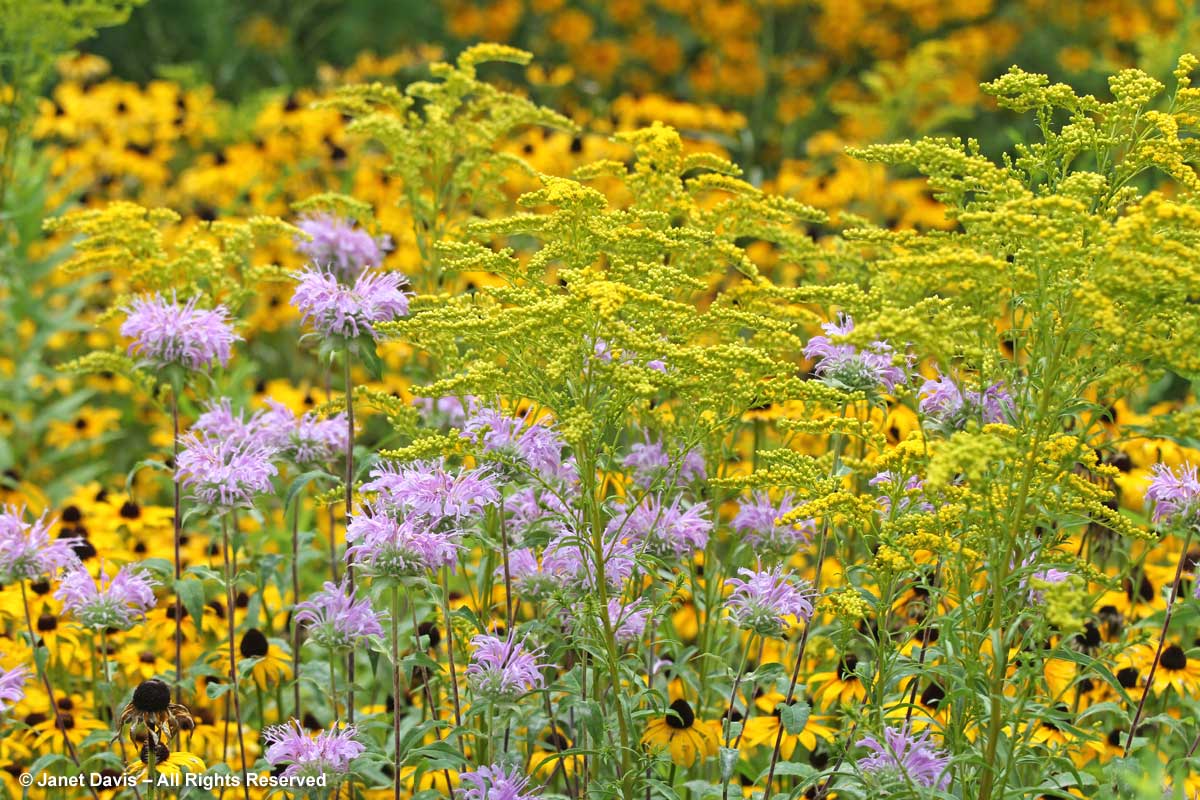On my annual theatre visit with old friends to the Shaw Festival in Niagara-on-the-Lake, I always sneak away for a few hours to visit the Niagara Parks Botanical Garden/School of Horticulture — a 20-minute drive away near Niagara Falls. This year, following a visit with 65+ garden bloggers in early June, I decided I needed to get back to see how the brand-new Legacy Prairie Garden was developing, now that summer is truly here. And I was not disappointed: it is utterly beautiful, arrayed like a flowering tapestry in front of the glass-walled Butterfly Conservatory!
My garden writing friends Anne Marie Van Nest and Theresa Forte have written articles about the formal opening of the Legacy Prairie in September 2014, noting that the 2011 groundbreaking marked the 75th anniversary of the 1936 founding of both the Niagara Parks School of Horticulture (it was called The Training School for Apprentice Gardeners then) and the Ontario Parks Association. Indeed, the signs at the entrance to the prairie list an impressive roster of donors, chief among them the alumni of the school whose members have long staffed botanical gardens, nurseries and design firms throughout Ontario.
The garden combines Tallgrass Prairie and Sand Prairie species with plants hailing from limestone alvars, but it looked like an ebullient, floriferous, idealized prairie the day I visited in mid-July. Though there are prairie grasses like the switch grass (Panicum virgatum) shown with the blazing star (Liatris spicata) below, they hadn’t yet made a big impact (given our coolish, rainy early summer weather).
I walked through the garden on the semi-permeable, porous asphalt pathways that allow rainwater to sift underneath the surface….
…. and collect in the little pond (where bullfrogs were croaking).
Shimmering mountain mint (Pycnanthemum virginianum), below, was strangely bereft of bees (the first time I’ve ever seen that bee magnet beeless), but it’s been that kind of summer so far in the northeast.
But bumble bees were nectaring on the glorious wild beebalm (Monarda fistulosa) at its peak bloom in the prairie.
Rugged hoary vervain (Verbena stricta) was flowering along with blackeyed susans (Rudbeckia hirta).
There were a few patches of bright orange butterfly milkweed (Asclepias tuberosa) – one of my very favourite perennials. Hopefully, it will spread throughout the prairie, as it’s a very desirable milkweed for monarch butterflies and all kinds of pollinators..
A black swallowtail was resting just out of my reach on spotted beebalm (Monarda punctata) – but I photographed her through the grasses.
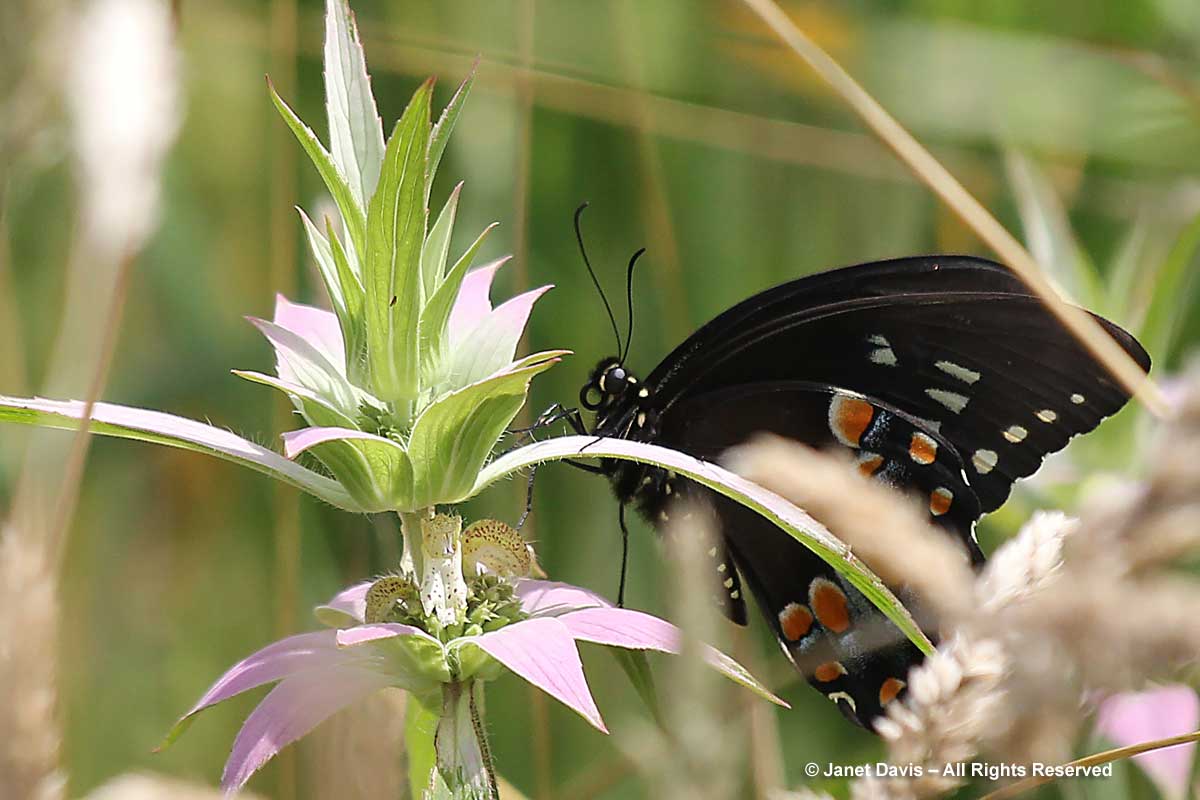
What a pretty and unusual little beebalm this is.
One lonely monarch butterfly was busy nectaring and ovipositing on swamp milkweed (Asclepias incarnata).
As she flew around the area, she attracted the attention of young visitors who eagerly snapped her portrait as she posed for them nearby.
Tall compass plant (Silphium laciniatum) faced north and south – a little army of stately sentinels….
….and gray-headed coneflower (Ratibida pinnata) was being its graceful, willowy self.
In a raised garden adjacent to the butterfly conservatory, pale purple coneflower (Echinacea pallida) bent sideways in the wind.
Rattlesnake master (Eryngium yuccifolium) was showing off its architectural form….
….and the first in a long seasonal parade of goldenrods – early goldenrod (Solidago juncea) – looked quite fetching with wild beebalm.
Quite a few people wandered the paths of the prairie, though I overheard one youngster whining to her mother as she turned on her heel and headed back out, “I like regular gardens, not ones like this!” (I must say, as a child this place would have been utterly heavenly to me, and continues to be today.) In time, I predict this prairie will attract huge numbers of visitors and they will want to know, as several visitors asked me, the names of the beautiful plants in this rich community. I suggested to the garden’s superintendent that a small teaching bed with plant labels at the entrance would be most helpful, since people are always anxious to know what it is they’re seeing. (At Chicago Botanical Garden, apart from the vast prairie, there’s a theme garden devoted to designing with native prairie plants.) Even some kind of interpretive signage with paintings of the plants would fulfill a teaching role, because there’s nothing worse than visitors wanting to be educated, but not finding the information. Hopefully, a donation from the Canadian Wildlife Federation earmarked for signage will help visitors learn about these fabulous plants. And I will enjoy returning again and again. .

